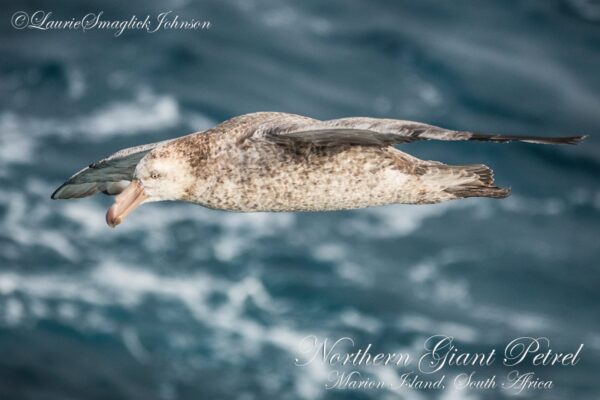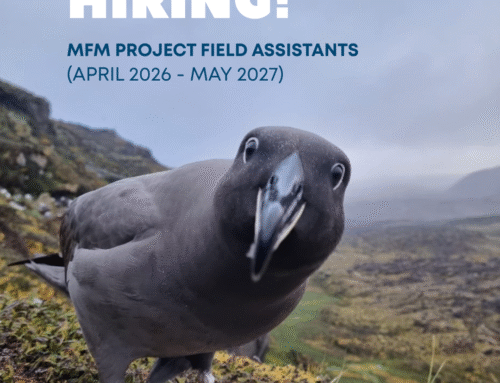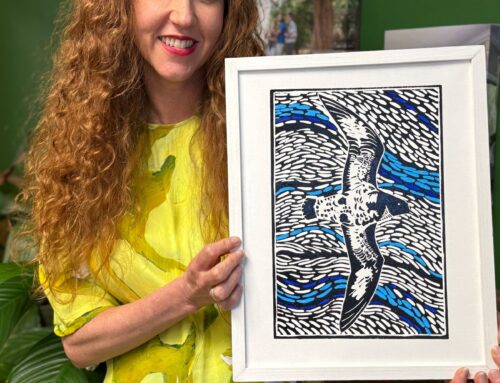Sundowner time! Margie and John Austin in Madikwe Game Reserve, North West Province, November 2022
John and Margaret Austin, who live in Johannesburg in South Africa’s Gauteng Province, have generously sponsored the Saving Marion Island’s Seabirds: The Mouse-Free Marion (MFM) Project with 26 hectares. Long-term members of the BirdLife South Africa-affiliated Witwatersrand (Wits) Bird Club, they are both retired: John was a mining engineer and Margaret a paralegal. MFM News got in touch with them to learn more. In reply, John writes of his significant involvement over the years with BirdLife South Africa and its precursor, the Southern African Ornithological Society (SAOS).
“I was used to carry out the first unskilled check of SABAP 1 [Southern African Bird Atlas Project] atlas cards for parts of the [then] Transvaal Province. Because of that and because I had publishing experience, I was asked to be the first Chair of the Atlas Publication Committee. This resulted in my becoming Chair of the SAOS and I held both positions for three years in the mid-1990s.”
John continues “This period was fantastic because as I was working with very experienced birders on both committees and was able to visit many different areas and learn a tremendous amount. Margie and I atlassed all over South Africa as well as in southern South West Africa [now Namibia]. I attended SABAP meetings in Cape Town and meetings were held in Windhoek with foreign embassies trying to raise money for the publication of the atlas. I held a first meeting with BirdLife International in Cambridge, UK that led to the SAOS joining the international partnership and its name change to BirdLife South Africa, this only taking place after my retirement as Chair.”
Gauteng is a landlocked province and not the place to get to know seabirds. But in 2007 the Austins got the chance to become acquainted with the seabirds of the Southern Ocean. “We went on a birding trip organized by Birdquest over November/December. We went to Buenos Aires, Ushuaia, the Falklands, South Georgia, Elephant Island and Antarctica on the Professor Multanovskiy, which only had 48 passengers as previously it had been a Russian research ship. This size enabled us to get into places that the larger ships of today cannot manage. We saw many special birds and mammals on this fantastic trip and we fell in love with this very special place and its inhabitants. So much so that our next trip was to Spitzbergen, Norway in the Arctic Ocean, also with BirdQuest and on a yacht carrying 18 passengers, when we saw the northern hemisphere specials. In a previous lifetime this yacht had been a Baltic lighthouse re-supply vessel with a shallow draft, again enabling us to go where the larger ships cannot manage. Because of our interest in the seabirds of all latitudes we received newsletters from the Gough Island Restoration Programme and signed up for the Mouse-Free Marion Quarterly Newsletter. We were horrified by the destruction caused by the introduced House Mice on both islands and have wanted to help in a small way.”
The Mouse-Free Marion Project is most thankful that John and Margie Austin, and many other birders and conservationists within South Africa and beyond, continue to support its efforts to restore Marion Island and allow its threatened seabirds to breed without the risk of literally being eaten alive by mice. You are all partners!
John Cooper, News Correspondent, Mouse-Free Marion Project, 12 November 2025
************************************************************************************

Northern Giant Petrel by MFM Project supporter, Laurie Smaglick Johnson, January 2025
The Mouse-Free Marion Project is a registered non-profit company (No. 2020/922433/08) in South Africa, established to eradicate the invasive albatross-killing mice on Marion Island in the Southern Ocean. The project was initiated by BirdLife South Africa and the South African Department of Forestry, Fisheries and the Environment. Upon successful completion, the project will restore the critical breeding habitat of over two million seabirds, many globally threatened, and improve the island’s resilience to a warming climate. For more information or to support the project please visit mousefreemarion.org.







